| FINITE ELEMENT ANALYSIS (FEA) |
Finite Element Analysis of pressure vessels is carried out using software Nozzle PRO (FE Pipe Module) that is popular around the world. NozzlePRO is a component analysis tool for piping and pressure vessels. NozzlePRO is based on the technology offered in FE/Pipe with a user interface that simplifies input and allows engineers to quickly analyze piping and pressure components with a high degree of accuracy.
Finite Element Analysis is evaluated on Nozzles (Straight, Pad type, Barrel type, Hill Side Nozzles etc.), saddles, Skirt, Pipe shoes and clips on shell or heads. The various head types that can be analysed are Conical, Dished, Elliptical, Spherical and Flat heads.
|
Finite Element Analysis can be carried out based on various loads i.e. thermal, weight, operating, occasional, pressure, wind and earthquake loads.
|
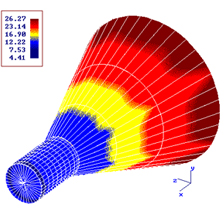 |
|
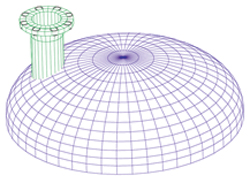 |
|
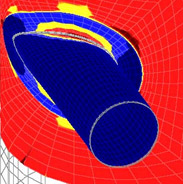 |
| Nozzle-Cone Analysis |
|
Hill Side Nozzle-Dished End Analysis |
|
Hillside Nozzle-Shell Analysis
with RF Pad
|
| |
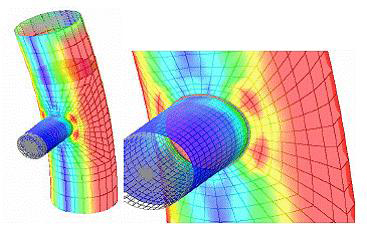 |
|
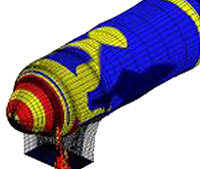 |
|
 |
| Nozzle-Shell Analysis |
|
Saddle-Vessel Analysis |
|
Saddle with Wear Plate |
|
| |
 |
| Structural Clips-Vessel Analysis |
| |
Key Features of the above said Finite Element Analysis are :
• Significant improvement over the limitations inherent in WRC 107/297 methods.
• SIFs, allowable loads, and flexibilities are calculated.
• Calculations include the correct evaluation of stresses at intersections due to pressure/thrust, linear temperature gradients and reinforcing pads
• Fatigue calculations are made for both piping and vessel codes
• Fatigue analysis includes a calculation for maximum allowed cycles and includes fatigue analysis according to BS5500, EN13445, ASME and WRC 474.
• 2DSteady state and transient heat transfer analysis of selected head models.
• Automatic head intersections and skirts brick models can be generated to evaluate overturning moments due to wind or seismic loads
• Saddle wizard with pipe shoe options for repads, fluid head, tapered saddles, and user controlled boundary conditions.
• ASME Section VIII Division 2 primary, secondary and peak stress analysis is carried out based on input of pressure and external loads. |
|
|



